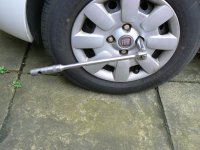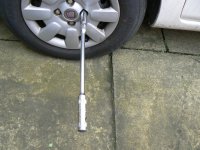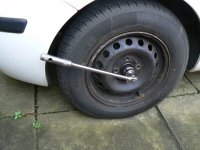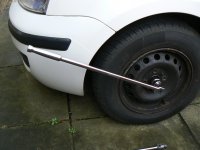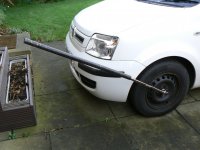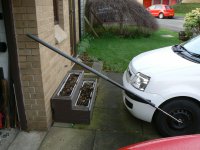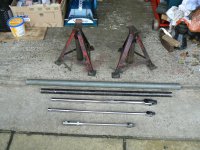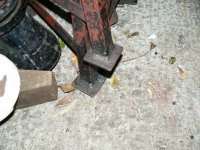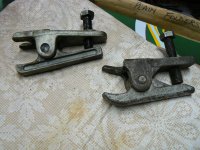'Morning Theleman. WD40 is a jolly good general purpose spray and I use it a lot myself for exactly the sort of thing you describe with the wheel barrow squeak.
I thought it might be useful to show you my current choice of "little helpers" in the battle against corroded fittings?
Here's a selection of the ones I find most effective:
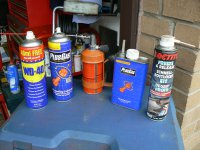
Plus Gas is my first choice and I find gets most things free. It works best if allowed to soak in before you try to undo - say half an hour if moderately seized but could benefit from overnight in severe cases. I keep both aerosol and liquid.
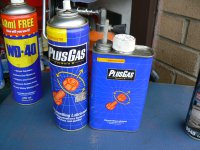
About two years ago I had a really stubborn brake caliper slide pin which was not responding to moderate heat (I don't like using excessive heat on brakes in case I damage seals or bushings). I had seen adverts for these "wonderful" freezer sprays so decided to try one:
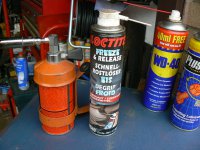
It works by rapidly cooling whatever it's sprayed on and also contains a releasing agent. I find it works best if you get the component moderately hot first (but nothing like red hot. Maybe spraying a very hot component would crack it?) and then spray. A quick squirt, like using WD40 or Plus Gas, won't do any good, you need a continuous 15 or 20 seconds - depending on the mass of what you are trying to cool - to get a good cooling effect. So I find you get maybe 6 good applications per tin. It works out quite expensive at £7 to £10 per tin but I find I don't need it often (I'm still on my first tin).
Then once you've got it in pieces and want to build it up again there are many situations where a bit of protection will help subsequent dismantling. Here are my main "little helpers" in this battle:
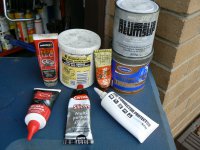
My main default used to be Copper Grease (the one on the right in the picture below) and I still use it in many situations but not on brakes because of the possibility of interference with ABS function.
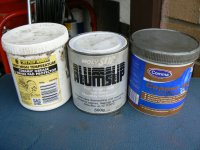
Then there's Aluminium Grease (the one in the middle) which has very much the same function as copper grease but I use it where aluminium parts are present. For instance on spark plug threads, heater plugs and injector bodies in ally heads (yes I know there are arguments against it, but I've been doing it for years and this old dog can't change his spots - I say "dog" because I'm too old and incapable to be a Leopard!)
The white tub on the left is Ceramic Grease which I use mainly on exhaust fitting. When I first bought it I was disappointed to find it is really runny! A bit like the consistency of honey - much thinner than the Copper or Aluminium stuff. However in use what happens is the oily component burns off the first time things get really hot leaving a white deposit, presumably the ceramic content, coating the fixing. I haven't taken much to pieces yet which I've treated with this stuff but I did have to realign the exhaust center pipe on the Jazz (fitted about 2 years ago) after renewing the rear silencer/tailpipe section and the fixings came apart like they'd just been done up yesterday!
Finally here are a few of the more useful other products I use regularly:
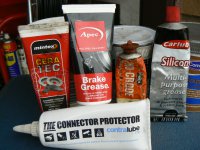
On the left is the Ceratec brake lube which I now use on brakes instead of the copper grease (Copaslip) which I previously used for years. If you google "copper slip vs ceratec you'll find a very interesting feature by the Mintex brake people on why not to use copper greases on brakes. Next to it is a new tube of the same stuff but by a different manufacturer - my ceratec is about to run out and that new one is what my factor is now stocking.
The 2 tubes on the right are Holts No crode which protects battery terminals (vaseline or even grease does the same but this product has a corrosion inhibitor? maybe it's better?) and on the right is a tube of silicone grease, good for rubber bushings and the like - anywhere that a petroleum based product is going to cause a problem.
Right at the front - the white tube - is an electrical connector protector - Contralube 770. You put a small amount on electrical connectors when reassembling them. You don't need a lot, I've had this tube for at least 3 years and not even used half of it yet. Since I started using it I've not had a failure due to terminal corrosion or poor electrical pathway. Coincidence maybe? but I'm convinced and will continue to use it.
So there you are. I've got a lot of other useful sprays etc (O2 sensor cleaner, silicon spray, graphite oil, etc) but these ones mentioned above are specifically "anti corrosion" Which is what this was all about -I think? Hope it's of some help.
Kind regards
Jock









